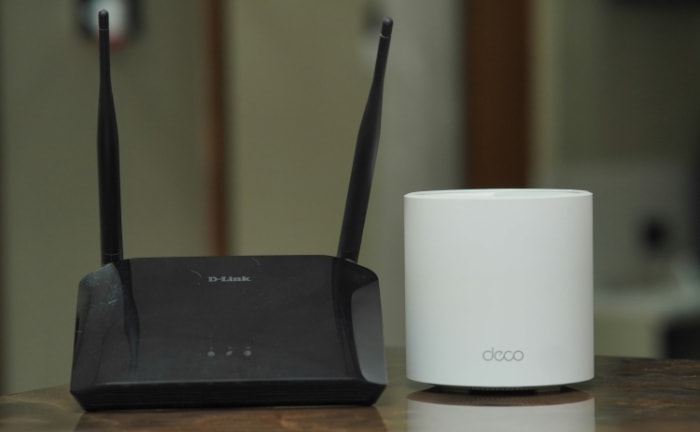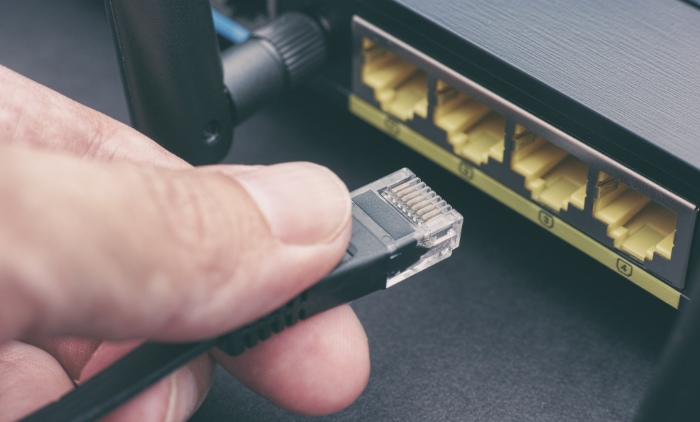Ethernet vs. Internet: Clearing the Confusion

Many people often find themselves mixing up two fundamental terms in the world of networking: Ethernet and Internet. This confusion is not just a simple mix-up of words but reflects a broader gap in knowledge regarding how our devices connect and communicate.
The Internet Explained
Before diving into the intricacies of Ethernet, it’s vital to first establish a clear picture of what the Internet is. Often referred to as the “network of networks,” the Internet is a colossal global system that connects computer networks from around the world.
It encompasses a wide array of technologies, but at its core, the Internet is about connectivity and communication on a global scale.
The Global System of Interconnected Computer Networks
The Internet operates by linking together millions of private, public, academic, business, and government networks. From small local networks in a single school to expansive networks spanning continents, the Internet binds them all together, allowing for seamless communication and data exchange.
This is achieved through a standardized set of protocols (TCP/IP), which ensure that data sent from one point in the world can be received and understood at another, regardless of the local infrastructure.
Role of the Internet in Enabling Worldwide Communication and Information Sharing
The transformative power of the Internet lies in its capacity to facilitate immediate and unfettered access to information and communication across the globe. It has revolutionized how we share knowledge, conduct business, and interact socially.
Beyond its technical achievements, the Internet has become a critical platform for innovation, education, and cultural exchange. It allows individuals to share ideas, learn from a vast repository of knowledge, and connect with others, transcending geographical barriers.
Ethernet Unfolded
Ethernet represents a cornerstone in the field of network technologies, providing the backbone for local network connectivity. Developed in the 1970s, it has evolved substantially over the years, yet its core mission remains the same: to connect devices within close proximity efficiently and reliably.
The Evolution of Ethernet Technology
Ethernet technology, conceived by Robert Metcalfe and his colleagues at Xerox PARC, was designed to simplify how computers within the same physical location could communicate with each other. Initially, it was a way for multiple computers to share resources and communicate over a single cable, reducing the complexity and cost of connecting devices.
Over time, Ethernet evolved from its original coaxial cable design to incorporate twisted pair and fiber optic cables, supporting higher speeds and greater distances between devices.
Crafting Local Connections: Ethernet's Role
At its essence, Ethernet provides the framework for establishing a Local Area Network (LAN), allowing computers, printers, and other devices to connect and communicate within a limited area such as a home, office, or campus. Unlike the Internet, which spans the globe, a LAN is confined to a smaller, geographical area, making Ethernet ideal for ensuring fast and secure communication between devices in close proximity.
Technical Pillars of Ethernet
Ethernet's ability to support a variety of physical media and data link protocols is among its key strengths. The use of physical cables, such as twisted pair (e.g., Cat5e, Cat6) and fiber optic, ensures a reliable and high-speed connection between devices.
Ethernet also employs a set of protocols that dictate how data is packaged, sent, and received over the network. This includes the Ethernet frame structure, which encapsulates data before transmission, and the Carrier Sense Multiple Access with Collision Detection (CSMA/CD) protocol, which manages how devices share the network's bandwidth.
These features contribute to Ethernet's widespread adoption and its reputation for speed and reliability in connecting local devices.
The Inner Workings of the Internet

The Internet is a vast and complex network that enables billions of devices to connect and communicate. It's a global infrastructure that transports a myriad of data across countries and continents in mere milliseconds.
To appreciate its scale and capability, it's essential to understand the foundational elements that keep this global network running smoothly, from the basic principles of data transmission to the critical role of service providers.
Data Packets and Transmission Protocols
At the foundation of Internet communication lies the principle of data transmission through packets. Information, whether it's an email, a webpage, or a video, is broken down into smaller, manageable pieces known as packets.
These packets traverse the network, guided by various protocols, with the Transmission Control Protocol/Internet Protocol (TCP/IP) being paramount among them. TCP/IP ensures that packets are sent and received reliably, orchestrating the sequence of packets so that the recipient can reconstruct the original message accurately.
This protocol suite is crucial for maintaining the integrity and efficiency of data exchange across the Internet.
The World Wide Web: A Layer Above
Often mistaken as synonymous with the Internet, the World Wide Web (WWW) is actually a service that operates on top of the Internet infrastructure. It utilizes the Hypertext Transfer Protocol (HTTP) to allow users to access and share multimedia web pages through web browsers.
The WWW has transformed the Internet into a dynamic repository of information and a platform for countless services, making it accessible and usable for people worldwide.
Connectivity Providers: The Role of ISPs
Internet Service Providers (ISPs) play a crucial role in connecting individuals and organizations to the Internet. They offer the necessary infrastructure, services, and technical support to ensure users can access the Internet seamlessly.
ISPs manage a range of networking resources, including DNS servers, routing equipment, and a network of physical cables or wireless technologies. By doing so, they bridge the gap between local networks and the global Internet infrastructure, ensuring that data can flow freely and efficiently to its intended destination.
Ethernet's Essential Role in Modern Networking
Ethernet technology is a foundational element in the architecture of local area networks (LANs), providing a robust framework for connecting devices in close proximity. Its development and evolution have significantly impacted how we access, share, and manage information within networked environments.
Facilitating Local Connectivity and Communication
Ethernet serves as the backbone for local network connections, enabling devices such as computers, printers, and servers to communicate with each other within a confined space. This connectivity is made possible through an intricate arrangement of cables, switches, and routers that work together to transport data.
Ethernet's standardized protocols ensure that data transmission is efficient, reliable, and secure, making it an ideal choice for both home networks and enterprise environments.
The Evolution from Coaxial Cable to Gigabit Ethernet
The journey of Ethernet technology from its inception involves significant advancements in speed, capacity, and connectivity options. Initially relying on coaxial cables, Ethernet has transitioned through numerous phases, including the adoption of twisted pair cables and fiber optics, to support faster data rates and longer distances.
Today's gigabit Ethernet offers speeds up to 40,000 Mbps, catering to the increasing demands for high-speed data transmission and bandwidth-intensive applications.
Wired vs. Wireless: A Comparative View
While Ethernet traditionally relies on physical cables for connectivity, the rise of wireless technologies has introduced new paradigms for network connections. Wireless networks, utilizing standards such as Wi-Fi, provide the convenience of mobility and ease of installation, making them attractive for certain applications. However, wired Ethernet connections still hold advantages in terms of stability, security, and speed, particularly in environments where high-performance networking is critical. The choice between wired and wireless often depends on the specific needs and constraints of the network, including range, bandwidth requirements, and the physical layout of the space.
Ethernet and Internet: Bridging Local and Global Networks
The relationship between Ethernet and the Internet is fundamental to our digital ecosystem, merging local network capabilities with global connectivity. This intersection is crucial for accessing the vast resources of the Internet while maintaining efficient, secure local networks.
Essential Connectivity Through Ethernet and LAN Technologies
Accessing the Internet from personal devices requires an underlying local network infrastructure, often facilitated by Ethernet or other LAN technologies. These systems provide the immediate link between devices (like computers, smartphones, and IoT devices) and the gateway to the Internet.
Whether it's through wired Ethernet connections in a corporate office or wireless links at home, LAN technologies are indispensable for interfacing with the broader Internet, serving as the first step in the data communication journey from local devices to worldwide networks.
Routers and Modems: The Gatekeepers to the Internet
Routers and modems play crucial roles in connecting local networks to the Internet. A modem (modulator-demodulator) converts digital data from a computer into a format suitable for transmission over traditional telephone lines, cable networks, or fiber optic connections.
Meanwhile, routers direct traffic between devices on a local network and external networks, including the Internet, using IP addresses to ensure data reaches its correct destination. Together, these devices manage the transition between your local Ethernet network and the vast, interconnected global network that is the Internet.
Real-World Applications: From Homes to Public Spaces
Home Networking: In a typical home setup, a modem receives Internet connectivity from an ISP and a router distributes this connection to various devices via Ethernet cables or Wi-Fi. This allows multiple devices to access the Internet simultaneously, share files, and use networked printers.
Office LANs: Larger networks, such as those in office buildings, rely on more complex Ethernet setups with switches and routers to manage the connectivity and bandwidth needs of hundreds of devices. These networks ensure that employees can access both local resources and the Internet efficiently and securely.
Public Wi-Fi: Public Wi-Fi networks, often found in cafes, airports, and libraries, use wireless LAN technology to provide Internet access. Here, a router connects to the Internet through a modem and then broadcasts the connection wirelessly, allowing users to connect without physical cables. Despite the convenience, these networks usually implement additional security measures to protect users' data.
The synergy between Ethernet (and other LAN technologies) and the Internet exemplifies how local and global networks collaborate to facilitate our daily digital interactions. By connecting devices within proximity through Ethernet and extending this connectivity to the Internet via routers and modems, we can enjoy a wide range of online services and information exchange, whether we're at home, in the office, or using public Wi-Fi.
Conclusion
Ethernet, with its roots firmly planted in local area networking, provides the essential infrastructure for devices to communicate within a limited space. Its evolution from simple coaxial cables to advanced gigabit connections underscores its adaptability and enduring relevance in connecting the digital dots at a local level.
On the other hand, the Internet emerges as a global network of networks, an unparalleled platform for information exchange and communication across continents. The synergy of these technologies powers the seamless flow of data that underpins our modern digital existence.
The significance of Ethernet and the Internet extends beyond mere technical marvels; they are lifelines of the contemporary world, facilitating everything from the basics of daily communication to the complexities of global commerce and knowledge sharing. Their continued development and integration are crucial in driving forward the innovations that shape our digital landscape.


